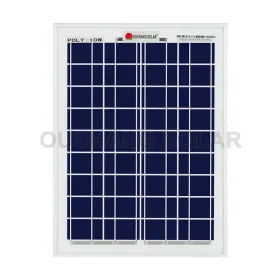Solar vs. Wind energy: which is better?
In the quest for cleaner and more sustainable energy sources, solar and wind energy have emerged as frontrunners, each with its unique set of advantages and considerations.
1. Harnessing Nature's Power:
How it Works: Solar panels convert sunlight into electricity through photovoltaic cells, capturing the sun's energy and converting it into a usable form.
Strengths:
Abundant Resource: Sunlight is a virtually limitless resource, available across the globe.
Versatility: Solar panels can be installed on various scales, from residential rooftops to large solar farms.
Wind Energy:
How it Works: Wind turbines generate electricity as their blades spin due to the force of the wind, converting kinetic energy into electrical power.
Strengths:
High Power Output: Wind turbines can generate substantial amounts of electricity, especially in windy areas.
Scalability: Wind farms can be expanded easily by adding more turbines, allowing for increased power production.
2. Environmental Impact:
Solar Energy:
Advantages:
Low Environmental Impact: Solar power production has minimal environmental impact once the panels are installed.
Silent Operation: Solar panels operate silently, with no noise pollution.
Wind Energy:
Advantages:
Low Greenhouse Gas Emissions: Wind energy produces minimal direct greenhouse gas emissions during operation.
Land Use Efficiency: Wind farms can be built on agricultural land, allowing dual land use.
3. Energy Efficiency and Consistency:
Solar Energy:
Advantages:
Low Operating Costs: Solar panels have low maintenance costs once installed.
Distributed Generation: Solar installations can be decentralized, reducing transmission losses.
Wind Energy:
Advantages:
Consistent Power Generation: Wind turbines can produce energy continuously, day and night, as long as there is sufficient wind.
Mature Technology: Wind power technologies are well-established and have achieved high levels of efficiency.
4. Challenges and Considerations:
Solar Energy:
Challenges:
Intermittency: Solar power generation is dependent on sunlight, making it intermittent and variable.
Energy Storage: Effective energy storage solutions are required for nighttime or cloudy days.
Wind Energy:
Challenges:
Aesthetic Concerns: Wind turbines can face opposition due to their impact on landscapes and wildlife.
Location Dependency: Wind farms require specific wind conditions, limiting their geographical feasibility.
5. Future Prospects and Integration:
Solar Energy:
Future Developments:
Advancements in Energy Storage: Research is ongoing to improve the efficiency and cost-effectiveness of solar energy storage technologies.
Increased Efficiency: Ongoing innovation aims to enhance the efficiency of solar panels, making them more productive.
Wind Energy:
Future Developments:
Offshore Wind Farms: Offshore wind projects are expanding, offering new possibilities for wind energy generation.
Smart Grid Integration: Integration with smart grids enhances the efficiency and reliability of wind energy systems.
Conclusion:
The choice between solar and wind energy depends on various factors, including geographical location, energy needs, and environmental considerations. In reality, a combination of both solar and wind technologies, along with advancements in energy storage and grid management, is likely to be the most effective strategy for a sustainable energy future. As technology continues to evolve, the synergy between solar and wind energy will contribute significantly to reducing our reliance on fossil fuels and mitigating the impacts of climate change.
- Previous: Unlocking Savings and Sustainability with Custom Solar
- Next: None



